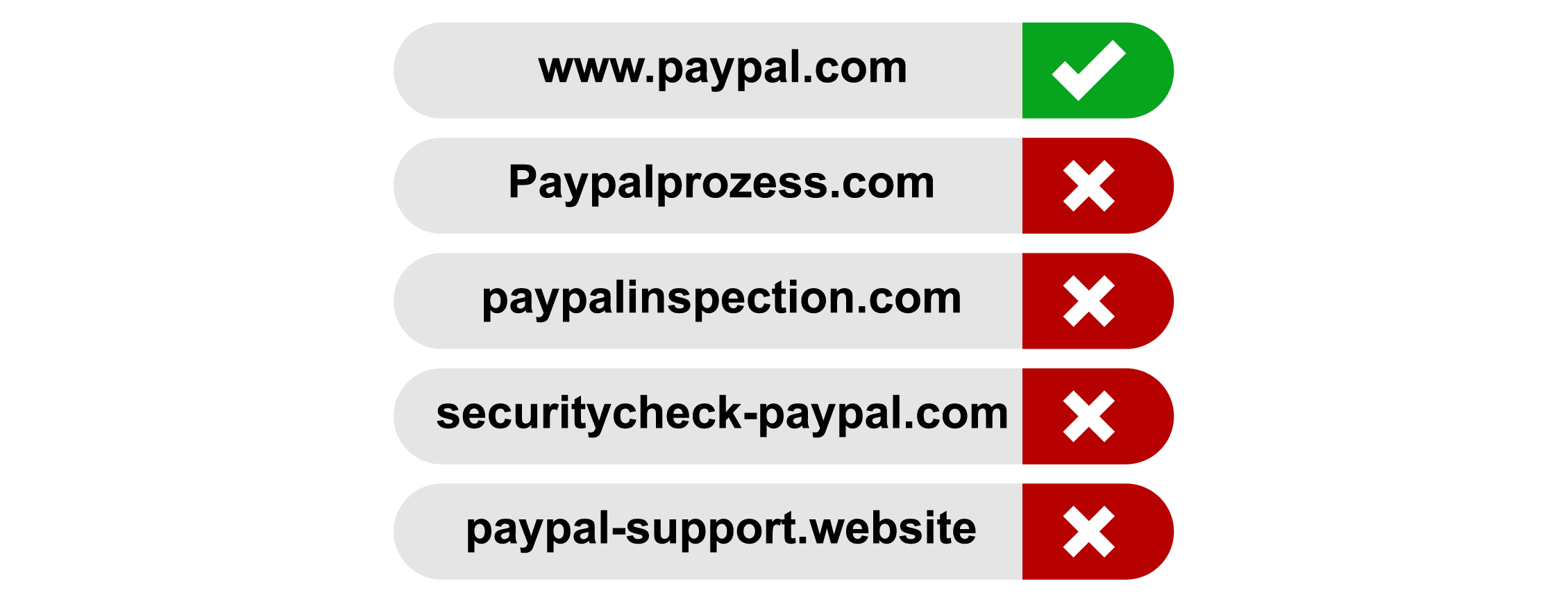Typo-Squatting

Typo-squatting is a type of online scam where attackers create fake websites with names that are very similar to real, trusted websites, often by using common typing mistakes. For example, if the real website is "example.com", they might create "exmaple.com" or "examplle.com". When people accidentally visit these fake sites, they might be tricked into sharing personal information, downloading harmful software, or even making payments.
Typosquatting is a cyberattack where malicious actors register domain names that closely resemble legitimate websites but contain minor typographical errors. These variations often exploit common typing mistakes, such as:
- Misspellings (e.g.,
gooogle.cominstead ofgoogle.com) - Omissions (e.g.,
gogle.com) - Replacements (e.g.,
go0gle.comwith a zero instead of "o") - Homoglyphs (e.g.,
faceb00k.comusing zeroes instead of "o")
The primary objectives of typosquatting include: - Phishing – Impersonating legitimate sites to steal credentials. - Malware Distribution – Infecting users' devices via malicious downloads. - Ad Fraud – Redirecting users to advertising pages. - Affiliate Scams – Generating revenue by misdirecting traffic.

Recover from a Typosquatting Attack#
Step 1: Identify the Compromised Domain#
- Investigate how users reached the fraudulent domain.
- Determine the scope of the attack, including any compromised credentials or data.
Step 2: Contain the Threat#
- Warn affected users to avoid the malicious domain.
- Prompt users to change their passwords immediately.
- Revoke or restrict access to accounts that may have been compromised.
Step 3: Report the Malicious Domain#
- Notify your domain registrar and request action against the typosquatting domain.
- Report the domain to cybersecurity authorities like Action Fraud (UK).
- Use phishing reporting tools to inform search engines and blocklists.
Step 4: Notify Relevant Stakeholders#
- Inform your IT or security team about the incident.
- Notify customers, employees, or partners and provide security recommendations.
Step 5: Conduct a Security Review#
- Analyze server logs to detect unauthorized access.
- Review DNS settings to ensure no unauthorized changes have been made.
Step 6: Take Legal Action#
- Seek legal assistance for trademark infringement cases.
- File complaints with domain registrars or ICANN.
Step 7: Educate Users#
- Provide guidance on recognizing typosquatting domains.
- Promote best practices for verifying URLs before clicking.
Mitigate the Risk of Typosquatting Attacks#
Register Similar Domain Names#
- Secure domains with common misspellings of your primary domain.
- Register multiple top-level domains (e.g.,
.com,.net,.org).
Monitor for Typosquatting#
- Use domain monitoring tools to detect fraudulent domain registrations.
- Set up alerts for suspicious domain activity.
Educate Employees and Users#
- Train users to verify URLs before clicking.
- Encourage using bookmarks for frequently visited sites.
Implement HTTPS and Security Features#
- Use HTTPS to establish legitimacy.
- Employ DNSSEC to prevent DNS hijacking.
Monitor and Block Malicious Domains#
- Utilize threat intelligence services to track fraudulent domains.
- Work with DNS providers to block known typosquatting threats.
Enhance Incident Response Plans#
- Include typosquatting scenarios in your security response plan.
- Assign team responsibilities for incident handling.
Legal and Regulatory Measures#
- Collaborate with legal teams to resolve domain disputes quickly.
- Notify domain registrars and regulatory bodies about typosquatting attempts.
User Awareness Initiatives#
- Publish security awareness materials to educate users.
- Regularly highlight official domains and caution against lookalikes.
Typosquatting Detection Algorithms#
To detect typosquatting attempts, various algorithms can be applied:
1. Common Typographical Variations#
- Misspellings (e.g.,
youtube.com→youtub.com) - Omissions (e.g.,
trademe.co.nz→trademe.co.mz) - Repetitions (e.g.,
amazon.com→amazzon.com) - Homoglyphs (e.g.,
google.com→goog1e.com)
2. Structural Modifications#
- Subdomain attacks (e.g.,
google.com→goo.gle.com) - Dash insertions (e.g.,
microsoft.com→micro-soft.com) - Dot to dash replacements (e.g.,
example.com→example-com.com)
3. TLD (Top-Level Domain) Manipulations#
- Wrong TLD (e.g.,
google.com→google.net) - Extra TLDs (e.g.,
amazon.com→amazon.com.uk)
4. Sound-Alike Variations#
- Homophones (e.g.,
base.com→bass.com) - Numeral swaps (e.g.,
google.com→g00gle.com)
5. Additional Techniques#
- Dynamic DNS usage (e.g.,
google.com→google.dynDNS.net) - Singular/plural modifications (e.g.,
nike.com→nikes.com)
Algorithm Options in Typosquatting Detection Tools#
Here are detection methods commonly used in typosquatting analysis tools:
- Run all algorithms – Executes all available detection methods.
- Common Misspelling – Uses a database of 8,000+ common misspellings.
- Homoglyph Attack Detection – Identifies visually similar character swaps.
- Vowel Swaps – Replaces vowels to mimic legitimate domains.
- Wrong SLD – Changes the second-level domain to another variant.
- Add Dash – Inserts dashes to mimic common formatting changes.
- Replacements – Substitutes letters based on keyboard proximity.
- Omissions & Additions – Removes or adds letters to mimic errors.
By applying these detection techniques, organizations can proactively identify and block typosquatting threats before they impact users.
By implementing these security measures, you can significantly reduce the risk of typosquatting attacks, protecting both your brand and your users.